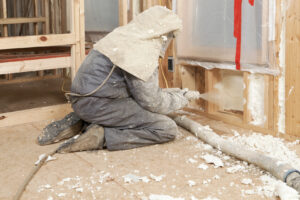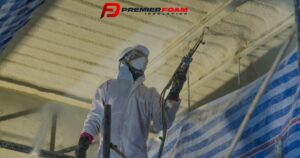Are you sick of inconsistent weather and skyrocketing energy costs? Do you wish your house were cozier and quieter?
Spray foam insulation is the only option! Although this cutting-edge solution promises better performance, it can be intimidating to sort through your options. Relax, daring homeowner! However, not all spray foam insulation materials are made equal, so you need to be very careful when choosing the one for your project. We will elaborate on the most important considerations for selecting spray foam insulation in this extensive guide.
1- Clarifying the Foam Duo: Open-Cell vs Closed-Cell Formulas
The two unique forms of spray foam—open-cell insulation and closed-cell insulation—are what give it its enchantment. Making informed decisions is essential to get maximum benefits.
- Open-Cell: This foam stretches to fit uneven spaces, making it ideal for attics and crawl spaces. It also boasts remarkable soundproofing qualities and is incredibly affordable. Envision a calm sanctuary devoid of disturbances! Its reduced R-value, or resistance to heat flow, may not be the best choice in extremely hot or cold areas.
- Closed-Cell: Despite its higher price point, closed-cell technology offers unmatched thermal performance. Imagine pleasant winters and chilly summers, which could result in lower energy bills! It’s also perfect for roofs, exterior walls, and basements due to its high strength and resistance to moisture.
Also Read: What Is Better Closed Cell or Open Cell Insulation?
2- R-Value Revolution: Choosing an Appropriate Thermal Shield
A barrier’s R-value is the temperature differential per unit of heat flux required to maintain one unit of heat flux between its warmer and cooler surfaces in a steady-state environment. The phrase “per unit area” for thermal resistance in the building sector is the R-value.
Your insulation’s shield against temperature changes is its R-value. Greater resistance is shown in higher numbers, which translates to increased energy efficiency.
- Choose R-values in the range of 13–19 for open-cell or 20–26 for closed-cell.
- R-values over 26 (closed cell) should be given priority for hot summers and cold winters, respectively.
Remember, getting advice from an expert is priceless.
3- Beyond Temperature: The Hidden Treasures of Spray Foam
Although thermal performance is crucial, spray foam has a few key potential benefits:
- Expertise in Air Sealing: Get Rid of Cold Rooms! Spray foam effortlessly closes even the smallest spaces, reducing air leaks and improving the comfort level in your house.
- Marvel of Moisture Management: A strong moisture barrier that keeps mildew and decay out of your house, closed-cell foam is especially important for crawlspaces and basements.
- Soundproof Sanctuary: Visualize a peaceful refuge! Because open-cell foam absorbs sound, it creates a quiet atmosphere that is perfect for media rooms or loud areas.
4- Selecting the Correct Contractor is The Trust Factor
Securing the services of a qualified contractor is essential to a successful spray foam installation. Here is a guide for you:
- Look for professionals with a track record of applying spray foam who are licensed, insured, and experienced.
- Compare product features, warranties, and certifications by requesting various quotes.
- Throughout the process, make sure there is good communication, and don’t be afraid to ask questions.
- Remember that the lowest quote may not be the best. Put quality and experience first for long-term comfort.
5- Cost and Return on Investment
Spray foam insulation delivers significant long-term savings and return on investment despite usually having a greater initial cost when compared to traditional insulating materials. Consider the whole ownership cost, accounting for decreased maintenance, energy savings, and possible grants or incentives for energy-efficient improvements.
Although spray foam reduces energy use over time and yields long-term savings, its initial cost may cause some concern. Do not be alarmed! Take into account these elements:
- In general, closed-cell batteries are more expensive than open-cell batteries, but the difference in performance is frequently worth it.
- Focusing on certain regions, such as crawlspaces or attics, might provide affordable solutions.
- In your location, there may be government rebates and incentives available. Do some research!
In the long run, spray foam insulation is a wise financial choice because of its durability and capacity to save energy, even though the initial investment may be more.
6- Put Safety and Health First
When selecting spray foam insulation, give top priority to goods that protect the health and safety of both installers and tenants. Seek goods and formulations with minimal volatile organic compounds (VOCs) that have passed extensive testing for indoor air quality. To reduce fume exposure and speed up the curing process, make sure there is adequate ventilation both during and after installation. You can minimize your influence on the environment and provide a healthier indoor environment for your family or occupants by putting health and safety first.
Need Spray Foam Insulation but not Determined?
Now that you have this information, you’re prepared to start using spray foam! Remember that making an informed choice now will pay out in the long run by providing you with a cozy, energy-efficient house. So, embrace Premier Foam Insulation spray foam’s potential to discover a world of thermal delight, tranquility, and comfortable, affordable living!
Whether you’re updating an old facility or insulating a new construction project, making the superior choice in spray foam insulation will pay off in the long run-in terms of sustainability, comfort, and energy savings.





